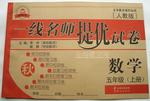题目内容
It ___________last night, for the ground is wet outside.
A.would be raining B. would have rained
C. must rain D. must have rained
练习册系列答案
 一线名师提优试卷系列答案
一线名师提优试卷系列答案 阳光试卷单元测试卷系列答案
阳光试卷单元测试卷系列答案
相关题目
题目内容
It ___________last night, for the ground is wet outside.
A.would be raining B. would have rained
C. must rain D. must have rained
 一线名师提优试卷系列答案
一线名师提优试卷系列答案 阳光试卷单元测试卷系列答案
阳光试卷单元测试卷系列答案